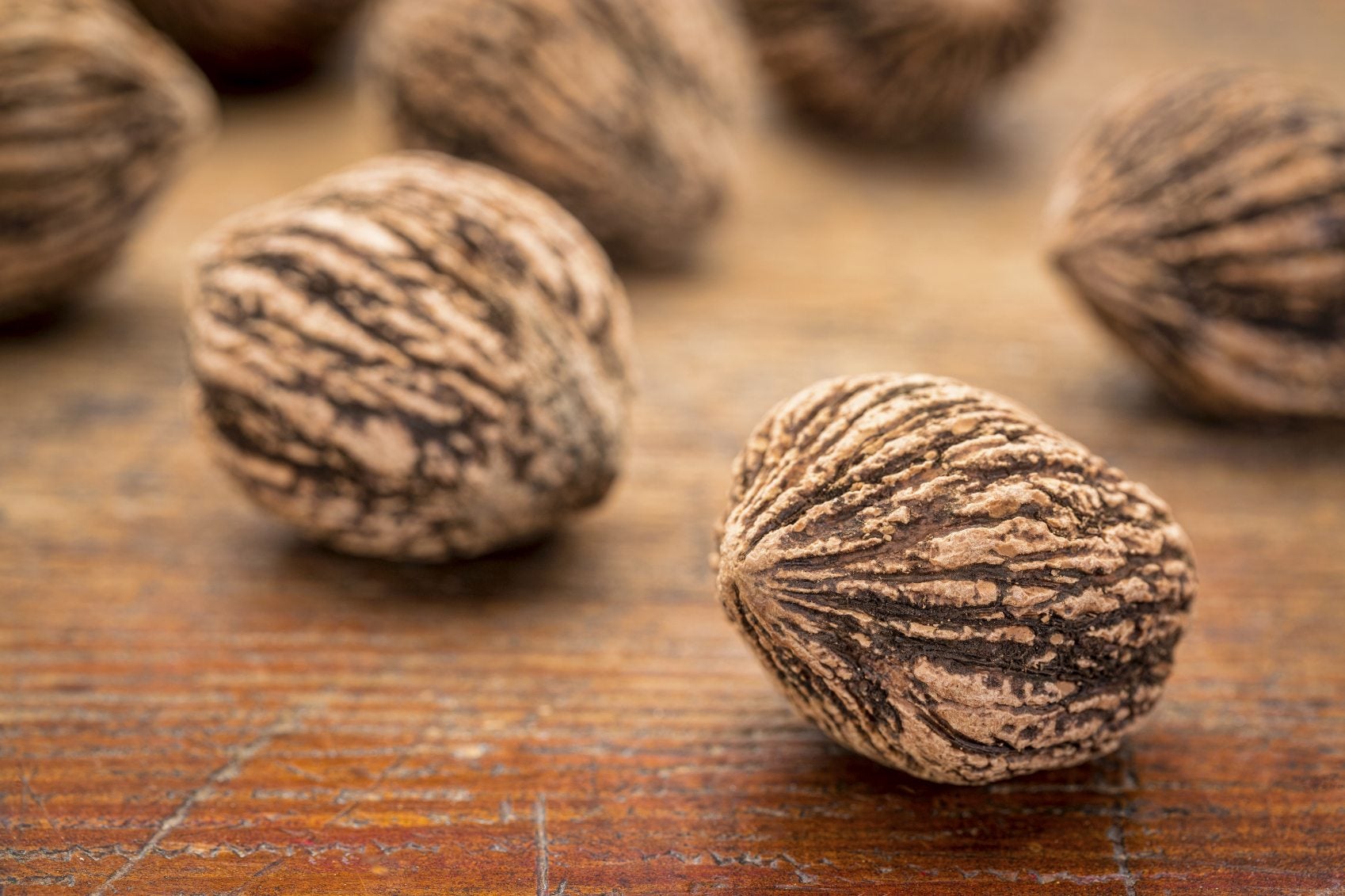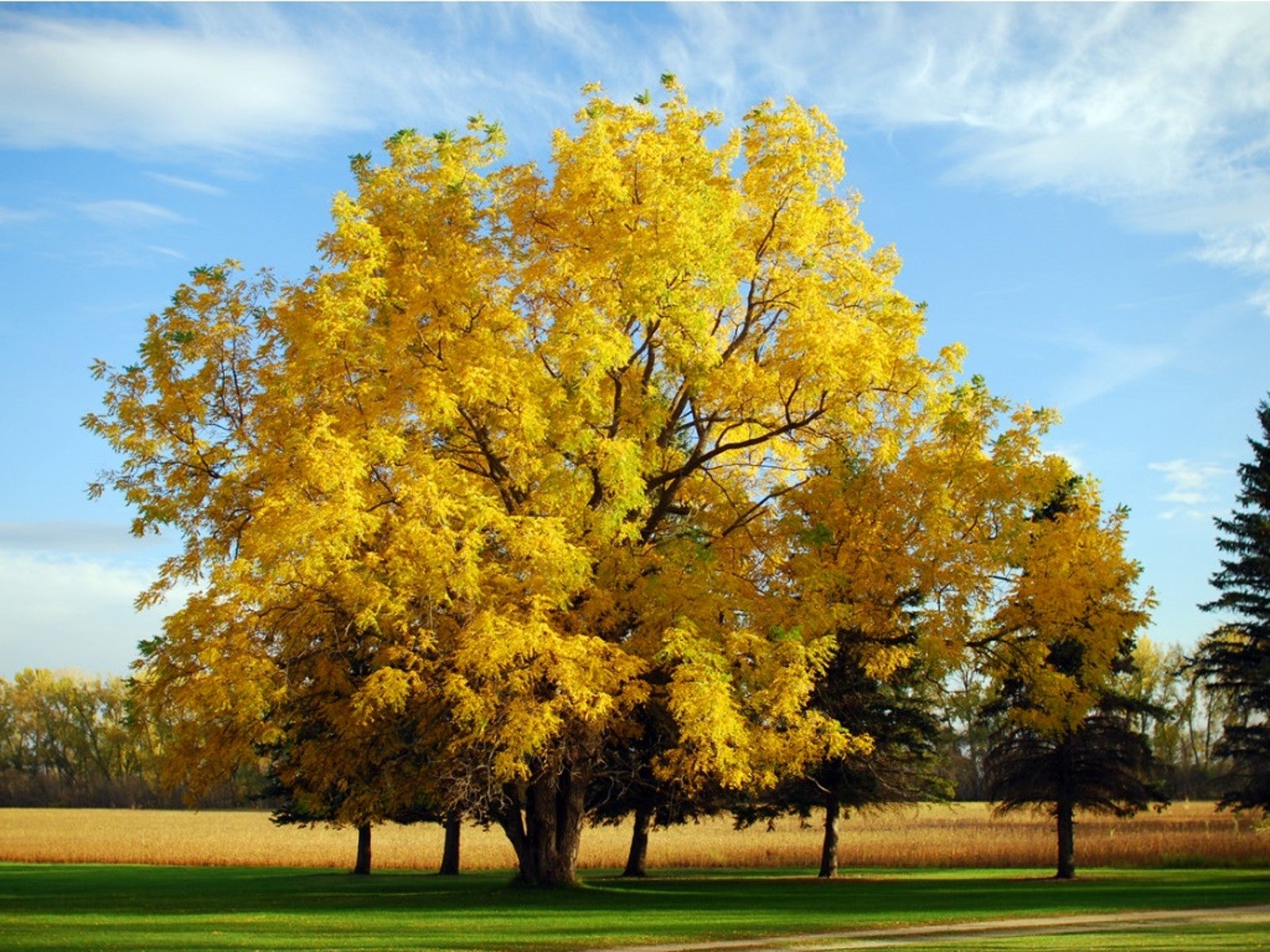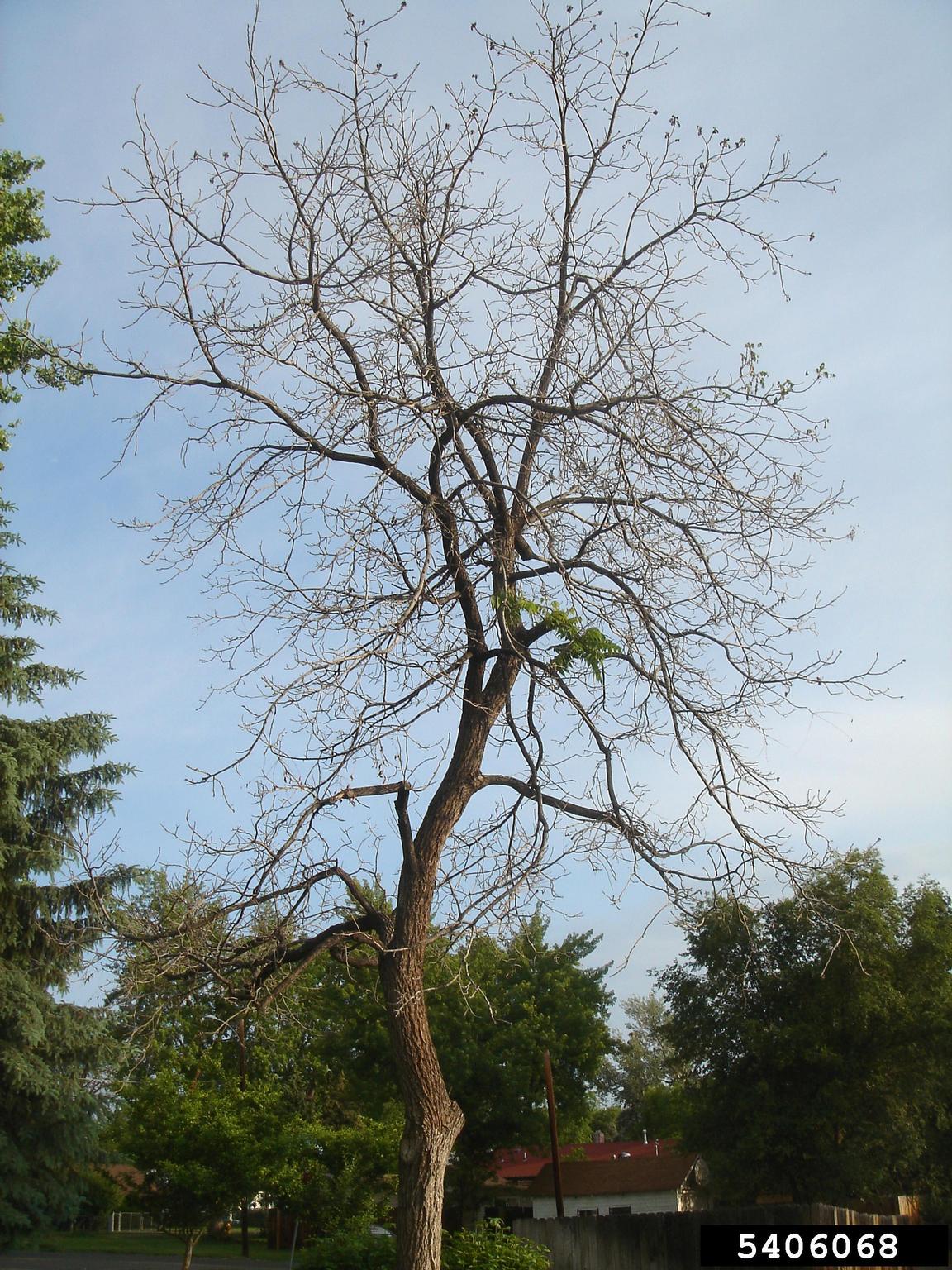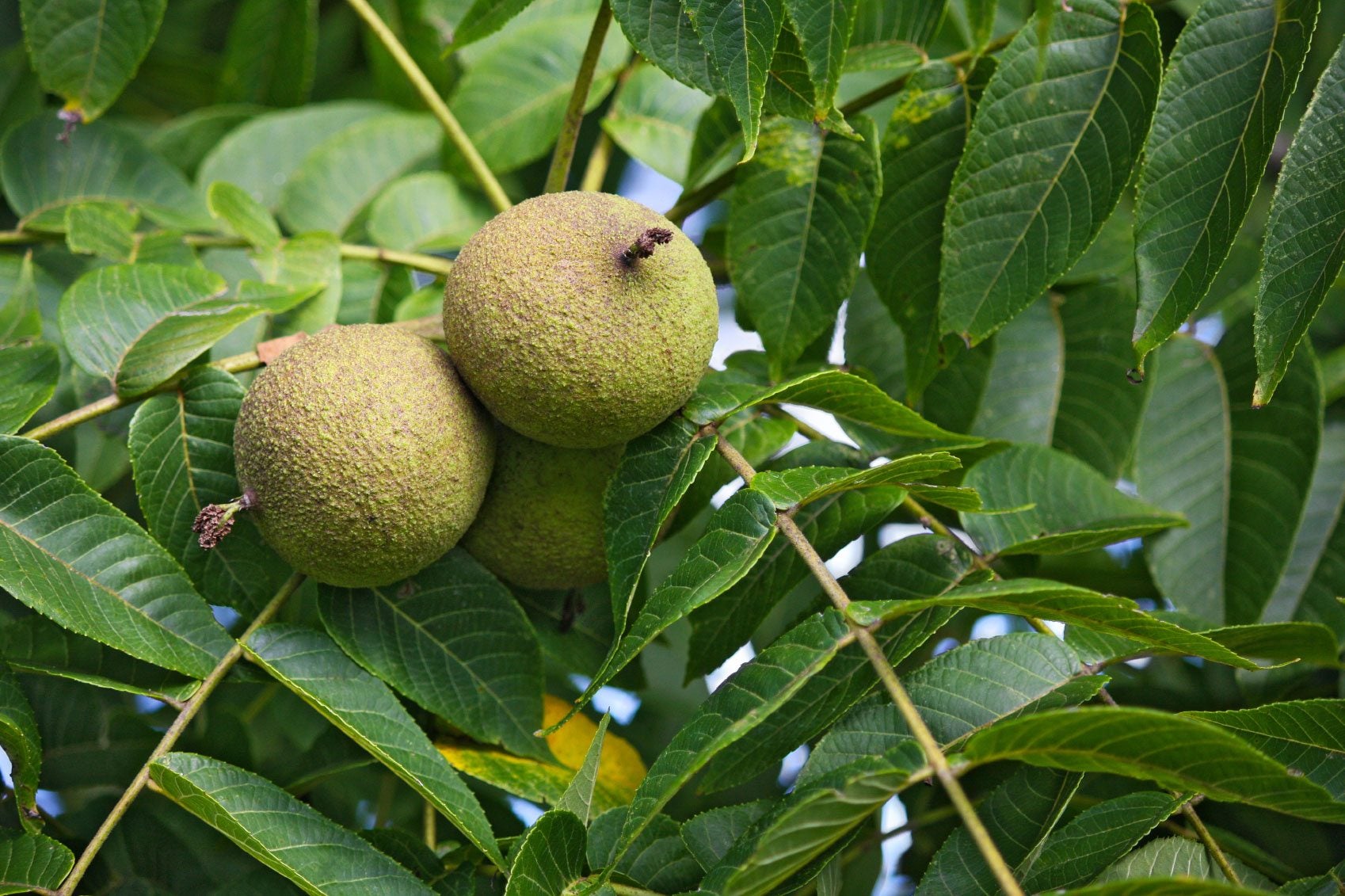Harvesting Black Walnut Trees: When Do Black Walnuts Fall


Black walnuts are one of the most flavorful nuts for snacking, baking, and cooking. These hard-shelled fruits have a sweet, delicate walnut flavor and are one of the most expensive nuts on the market. If you have a chance at harvesting black walnut trees, take it! You'll enjoy the experience and gather a batch of delicious nuts that will store for up to two years. Picking black walnuts straight from the source is easier than you might think. Black walnuts that are ripe will almost literally fall in your lap. All you need is a tarp, some containers, and knowledge of when black walnuts fall.
When Do Black Walnuts Fall?
Juglans nigra, or black walnut, is a very hardy species of nut tree. The plant sets fruit in summer, but the nutmeat isn't ready until fall. This is the time of year you might want a hard hat if you are walking under a black walnut tree. Some of the hulled nuts can be nearly as big as a fist and pack quite a wallop when dropped from upper branches. It is important to test a few fruits before picking black walnuts. This is because they tend to abort unfinished nuts and you may be picking up aborted nuts rather than nice, fat, ripe fruits. Autumn is the time for black walnut harvesting. In the tree's native region of eastern North America, fruits drop from September until October. Dropped hulls usually mean ripe fruits, but you should check the appearance to ensure ripeness. The unripe fruit is green while the fully ripe fruit is yellowish verging on tan. The hulls have a potent stain, so it is advised to wear gloves when harvesting the fruit. The stain will leave a permanent dark brown on fingers that aren't protected. Don't bother picking up fruits that are completely black. These are probably too far gone, and the nutmeat may be rotten.
How Do You Harvest Black Walnuts?
Wear clothing that you don't care about and gloves when harvesting black walnut trees. The stain will get on anything and won't come out. The messiest time when black walnut harvesting is during hulling. Nuts need to be hulled before being washed, dried, and stored. Removing the hulls can be difficult. Some people swear by driving over the hulls to crack them off, but this can send pieces of shell and nut flying everywhere. Commercial growers have a machine that separates the hull from the shell, but home operations usually jury rig a slurry with water and some pebbles to soften the hulls and then remove them with a hammer. Use heavy gloves and hit the ends of the nut to crack the hull off. Safety glasses are a good idea when hulling black walnuts.
Storing Black Walnuts
Black walnuts can be stored for up to two years. After hulling, wash the shells of the nuts. This is best done outdoors, as even the shells have staining properties. Sort through the nuts and discard any with signs of insect damage or rot. Lay the nuts out in a single layer and allow them to dry for two to three weeks. This ensures that the nuts are cured and dried nuts will keep longer. Store unshelled nuts in cloth bags or mesh in a cool, dry location. For longer preservation, shell the nuts and freeze the nutmeats in freezer bags or containers. The shells are harder than even the hulls, so a good step is to soak the shells in hot water for 24 hours before attempting shelling. This will soften the shells and make them easy to crack. Shelled, frozen nuts will keep for up to two years.
Gardening tips, videos, info and more delivered right to your inbox!
Sign up for the Gardening Know How newsletter today and receive a free copy of our e-book "How to Grow Delicious Tomatoes".

Bonnie Grant is a professional landscaper with a Certification in Urban Gardening. She has been gardening and writing for 15 years. A former professional chef, she has a passion for edible landscaping.
-
 Types Of Tomatoes Explained: Explore The Many Wonderful Shapes, Colors, Flavors, & Best Uses
Types Of Tomatoes Explained: Explore The Many Wonderful Shapes, Colors, Flavors, & Best UsesThe world of tomato varieties is vast and fascinating. Learn about the key types to grow in your garden, tailored to your preferences and space.
By Amy Grant
-
 Try The Trend – Turn Any Bed Into A Keyhole Garden With This Clever In-Ground Composter
Try The Trend – Turn Any Bed Into A Keyhole Garden With This Clever In-Ground ComposterKeyhole gardening is an efficient and sustainable practice that saves space. Get started on this DIY project quickly and easily with an in-ground composter.
By Bonnie L. Grant
-
 Choosing Juglone Tolerant Trees – Planting Trees Near Black Walnuts
Choosing Juglone Tolerant Trees – Planting Trees Near Black WalnutsIf you want to plant trees next to black walnuts, you need ones with juglone tolerance. For more information, click here.
By Teo Spengler
-
 Is My Black Walnut Dead: How To Tell If A Black Walnut Is Dead
Is My Black Walnut Dead: How To Tell If A Black Walnut Is DeadBlack walnuts are subject to diseases and pests that can kill them at any age. Click here and learn how to tell if a black walnut tree is dead or dying.
By Teo Spengler
-
 Planting Black Walnut Trees: Learn About Black Walnut Tree Growing
Planting Black Walnut Trees: Learn About Black Walnut Tree GrowingIf you are an avid arborist or if you live in an area that was, until recently, populated by native black walnut trees, you may have questions about how to plant a black walnut tree. Also, what other black walnut tree info can we dig up? Click here.
By Amy Grant
-
 Black Walnut Tree Compatible Plants: Plants That Grow Under Black Walnut Trees
Black Walnut Tree Compatible Plants: Plants That Grow Under Black Walnut TreesThe black walnut tree is a great hardwood tree that is grown in many home landscapes. However, because of its toxicity, some plants don't do well when planted around the black walnut. Read here for tolerant plants.
By Gardening Know How